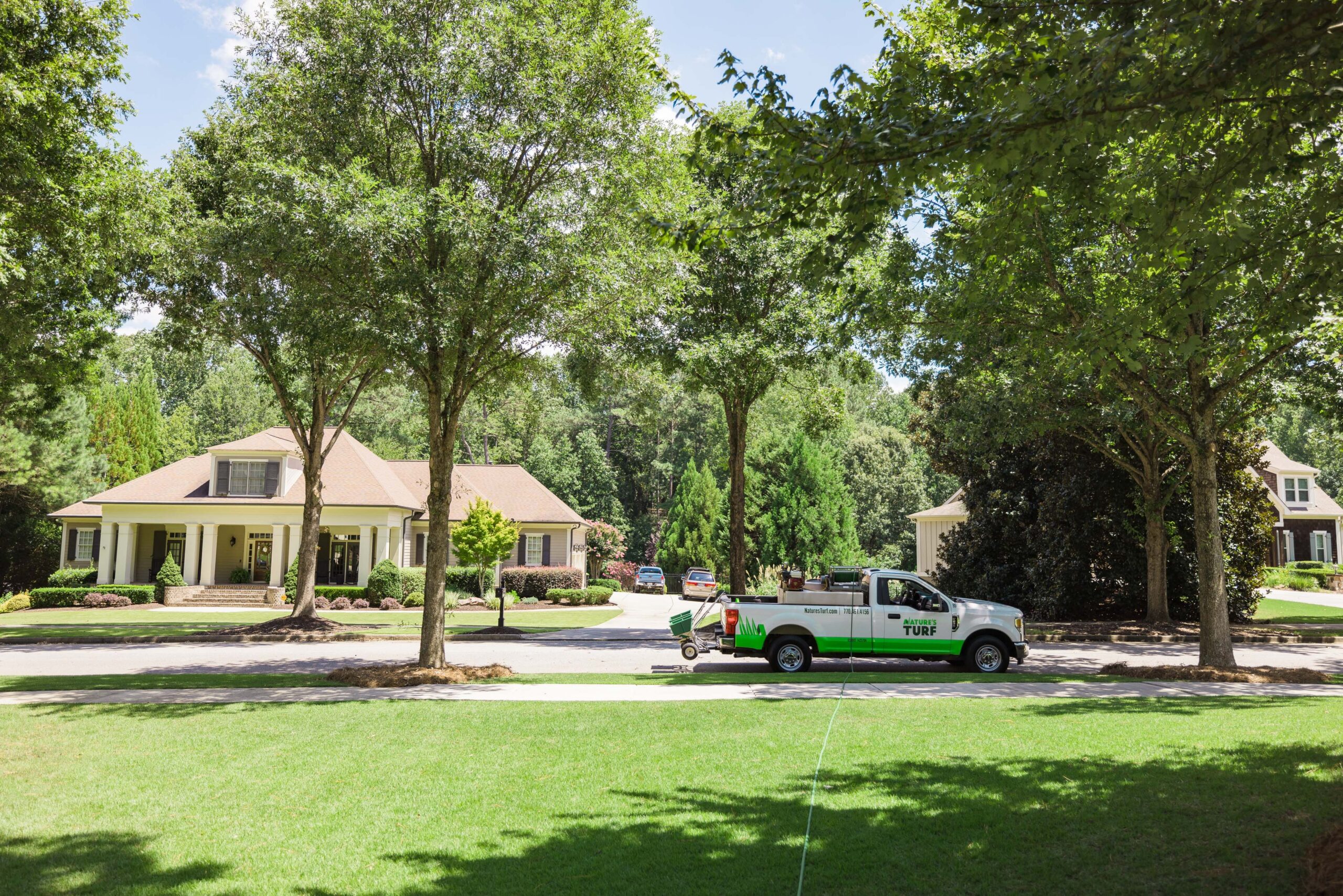Designing a landscape that properly frames a home magnifies the beauty of your most prized asset. Choosing the appropriate shrubbery, corner plantings, and accent trees that fit the landscape and structure can make or break a design. Once confirmed, however, the greatest hurdle is getting large components like trees and shrubs planted, and doing so in a way that ensures success. With a few key rules considered, it is as easy as digging a hole. Let’s take a look at the guidelines that will give your woody ornamentals their best shot.
How Big Should The Hole Be?
Whether they come balled and burlapped or in a pot, it may seem logical to dig a hole roughly the same size as the pot or dirt mass, plop it in, and call it a day. While this would make the job easier, planting in this manner has negative consequences in both the short and long term.
Regardless of where you live, the soil you are planting into is far more compact than the soil in the pot that your plants come in. The red clay we have in Georgia takes that statement up a notch or two. Think for a moment about how tough it is to dig a hole in your yard versus how difficult it is to dig a hole in a bag of potting mix. Roots have the same difficulty growing and spreading into that ultra-compacted clay. If they can’t grow out, they simply grow around. Despite being planted in the ground, they become root bound in the same way they would if they were in a pot.
To avoid this, it is encouraged to dig a hole 2-3 times the width of the existing root mass. That means you want to dig a hole that is 2-3 feet wide for a 1 foot root mass. Removal of rocks and breaking up clods of clay before backfilling is encouraged. Packing the dirt at intervals as you fill the hole is also fine. It will help to hold the plant in place. Lastly, there is no real need to integrate amendments for plants that are well-acclimated to our soils and climate.
How Deep Should The Hole Be?
This is one of the most misunderstood and forgotten considerations when planting a tree or shrub. It’s easy to bury a plant too deeply with dirt and mulch creating health problems like bark rot that will make themselves known sooner or later. The simplest rule is to plant it at the same depth the nursery planted it. Growers generally get this right. Mirroring it is safe. When in doubt, a little shallow is more acceptable than too deep.
Every plant has a root crown, or the point where roots converge with the shoot/truck. It’s this line that we are aiming to approximate the depth of. For small plants, this is often indicated by a change in coloration. Larger plants have a flare at this point. Take a look at the large trees naturally growing around you, and you will see that flare. It is important to remember that mulch contributes to this depth as well. Planting a tree to the right depth and burying it with mulch results in a tree that is planted too deeply.
How Do I Care For It Once It Is Planted?
The most important consideration during establishment is available water. Once planted, you want to ensure the planting hole is moist. Not saturated, but moist. It needs to stay this way for the first few weeks as it begins growing roots and overcomes the shock of planting. After that, it should be watered 2-3 times a week to maintain that moisture.
Regarding fertilization, nursery-grown plants are fairly well-fertilized from the producer. Applying some slow-release fertilizer, allowing it to break down and become plant available in small doses is key. There is no need to put fertilizer in the fill dirt. It can be unnecessarily injurious. Soluble fertilizers percolate into the pores as they dissolve, finding their way to the root system for absorption.
Unlike lawns, woody ornamentals like trees and shrubs can feel very “set and forget.” Many people have never worried about watering their trees or shrubs, much less fertilizing them or using products to thwart damage from fungus or insects. While many species do well if left to their own devices after establishment, they aren’t meeting their full potential without these additional inputs. If we can help you navigate the cultural practices and additive applications, we’re always here to help.
Important Takeaways:
- Planting trees and shrubs can seem like a daunting proposition. With a few key rules considered, it is as easy as digging a hole.
- It is encouraged to dig a hole 2-3 times the width of the existing root mass. That means you want to dig a hole that is 2-3 feet wide for a 1 foot root mass.
- Regarding depth, the simplest rule is to plant it at the same depth the nursery planted it.
- Every plant has a root crown, or the point where roots converge with the shoot/truck. It’s this line that we are aiming to approximate the depth of.
- The most important consideration during establishment is available water. Once planted, you want to ensure the planting hole is moist. Not saturated, but moist. It needs to stay this way for the first few weeks as it begins growing roots and overcomes the shock of planting. After that, it should be watered 2-3 times a week to maintain that moisture.
- Applying some slow release fertilizer, allowing it to break down and become plant available in small doses is key.
- If we can help you navigate the cultural practices and additive applications, we’re always here to help.








